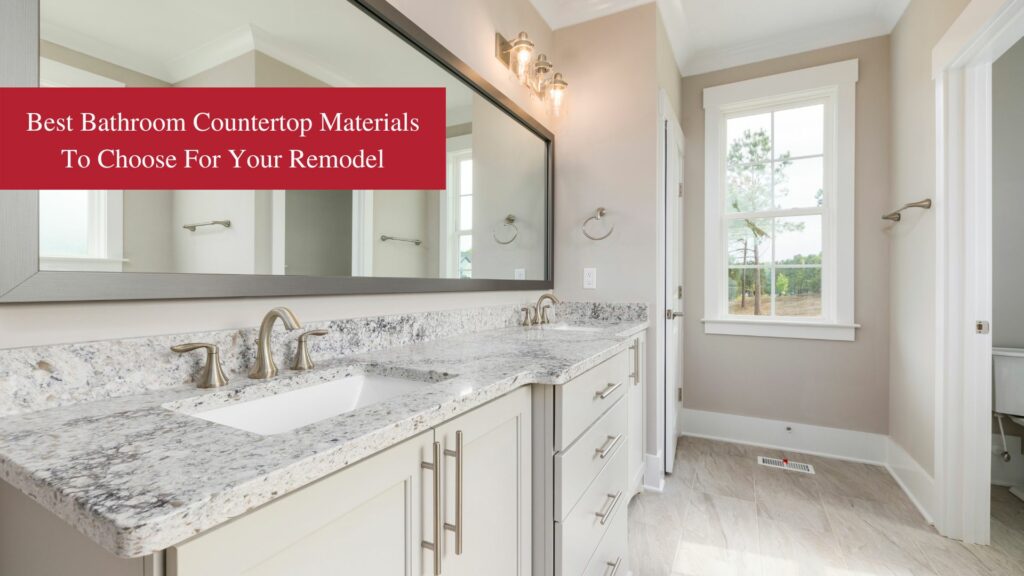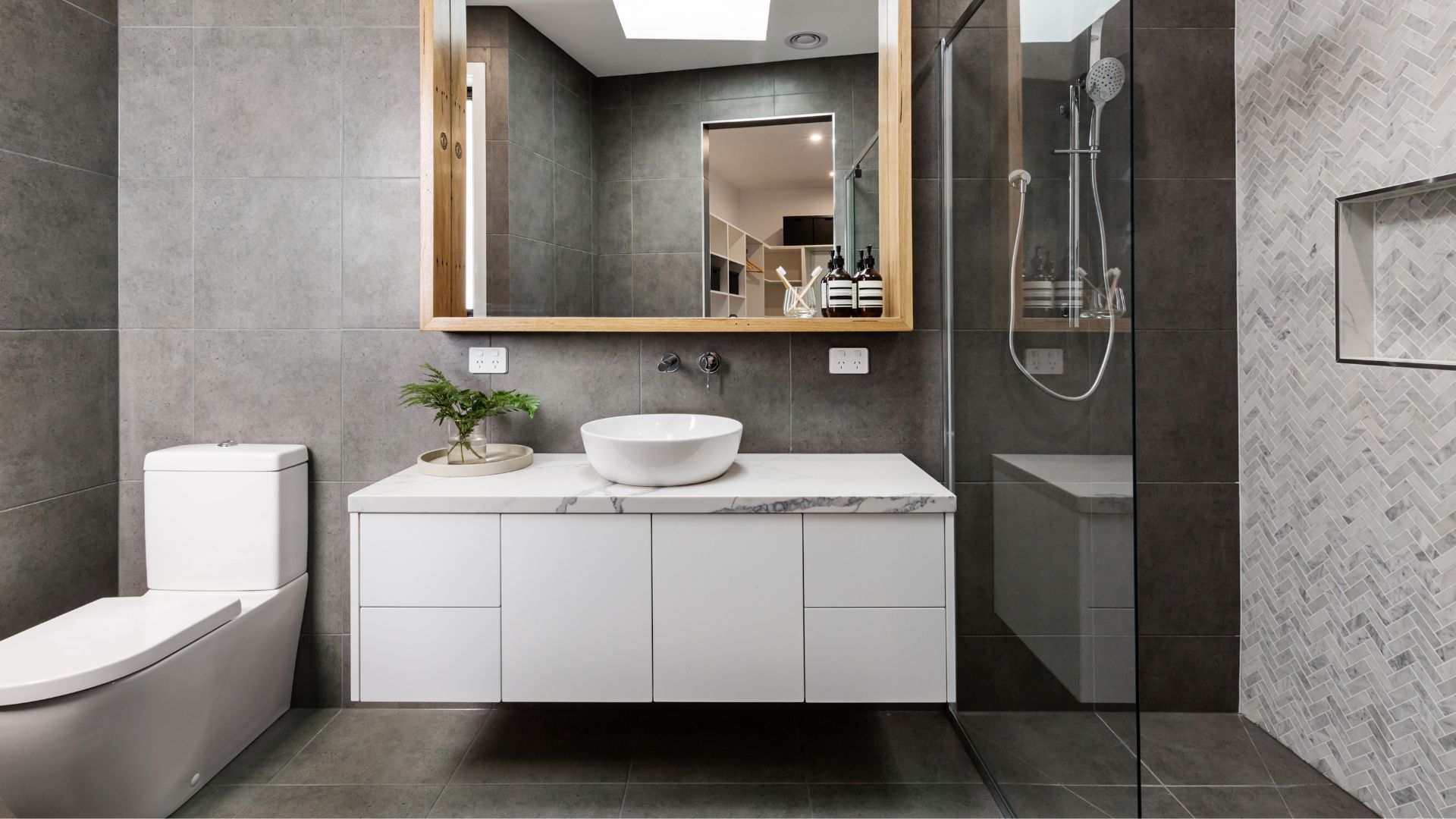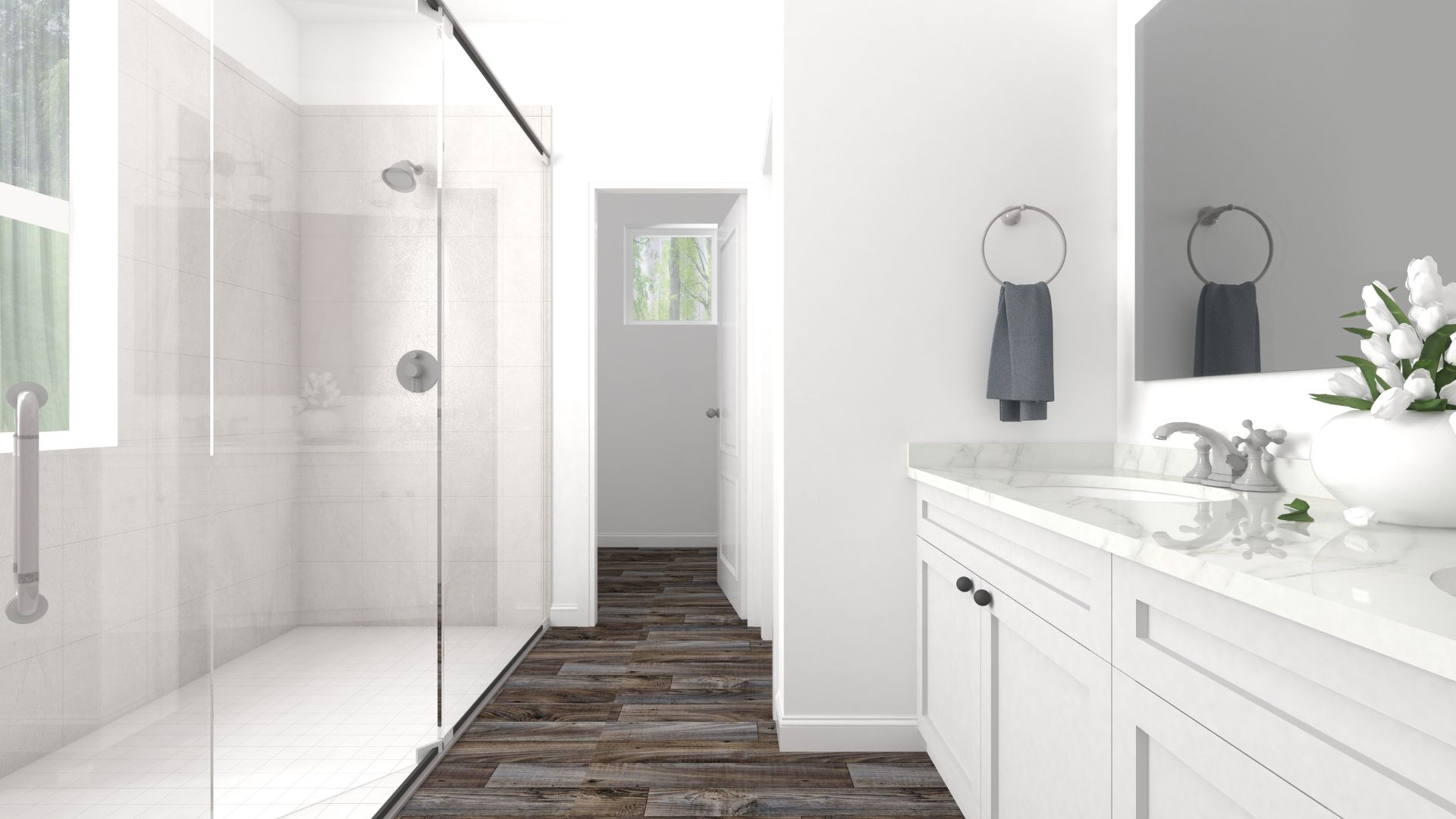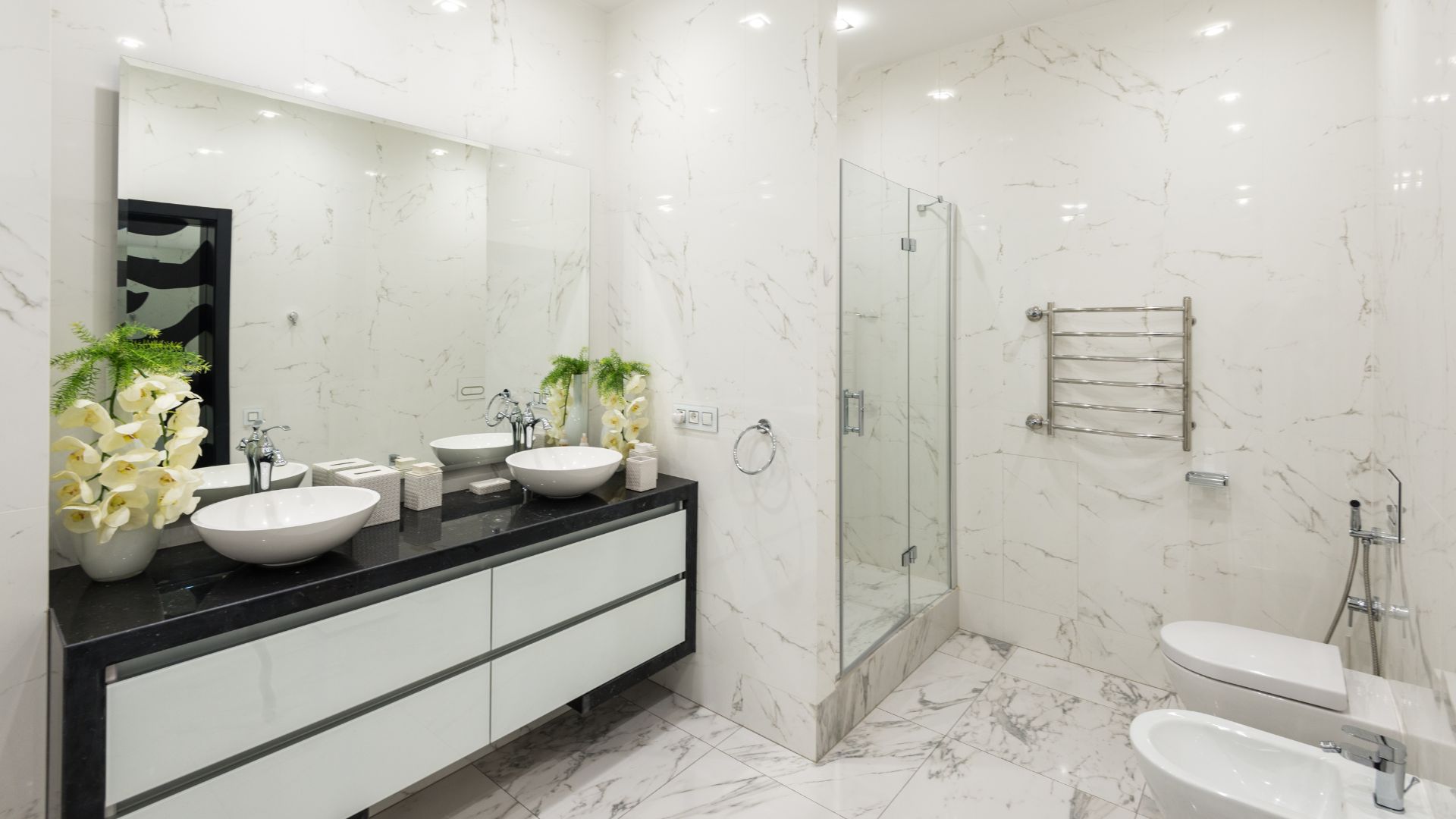If you’re remodeling your bathroom, choosing the right bathroom countertop is an important step in the entire process. The material you choose has a significant impact on the overall quality of your countertop. You need to know the pros and cons of the different bathroom countertop materials available in the market. Don’t worry – it is not as dreary and monotonous a process as it seems.
There are plenty of attractive colors, patterns, and other features to hold your interest. You must, however, keep your budget and personal requirements in mind.
Earlier, standard bathroom countertops used to be either ceramic tile or cultured marble but now you have more options to choose from. While it is possible to find a bathroom countertop made from a unique material such as wood or stainless steel, the best countertop material for your bathroom vanity top will usually be made of either tile or marble. However, that doesn’t mean that you should limit your options. Here are some of the best bathroom countertop materials that you can choose from during your bathroom remodel.
Ceramic and Porcelain Tiles
Ceramic and porcelain tiles have been traditionally considered the best bathroom countertop materials for a long time. They also have significant popularity among modern design enthusiasts who are seeking an innovative approach to bathroom remodeling.
Porcelain is firm, durable, and non-porous. Hence, it is quite resistant to water infiltration and bacterial growth. The same holds true for ceramic as well. You can potentially save money by opting for a DIY approach in the case of ceramic tiles.
They are available in a wide range of beautiful colors, shapes, and textures. They are excellent choices for flooring and bathroom countertops, especially for customers wanting a vintage vibe in their space.
On average, they will cost you around $2 to $15 per square foot in DIY approaches. If you go for professional help, you will have to pay about $35 to $40 per square foot. Keep in mind, though, that grout lines can potentially damage their aesthetic appeal with time.
Laminate
Once a trendy option, laminate went out of fashion with the emerging demand for other bathroom countertop materials. However, homeowners’ tastes and lifestyles keep changing with time.
Laminate is slowly making its way back into the league of the best bathroom countertop materials once again. It is composed of multiple layers of plastic bonded to particleboard or medium-density fiberboard (MDF). That makes it highly durable and resistant to moisture.
It is available in a wide range of colors and patterns, making it almost impossible to tell from wood, granite, and even leather. Being non-porous, it is simple to maintain and resistant to staining.
It is also relatively cost-effective and is available in the form of readymade countertop varieties as well. You can save a lot of money by going for a DIY approach when installing them. However, keep in mind that it is vulnerable to chipping and scratching. Also, laminates are quite challenging to replace.
Concrete
For decades, concrete has been one of the topmost entries in the best stone bathroom countertop materials list. It is highly durable and is especially well-known for being highly customizable.
You will be able to get it fabricated according to your tastes and your space’s needs. It can be texturized, stained, and polished as well. You can even choose from different bathroom countertop colors. Adding pieces of tiles, stone, or polished glass during installation can give concrete an even more elegant look.
That said, concrete is porous and you need to maintain and seal it regularly. Concrete countertops tend to be very heavy and require substantial support from your vanity or base cabinets.
You cannot go for a DIY approach here – you need an expert to fabricate and install it. If you chip or crack a concrete bathroom countertop, your only option is to replace the entire bathroom countertop. There isn’t any way to repair it.
Quartz or Engineered Stone
When you’re buying quartz, you have to remember it is an engineered material prepared with a combination of 90% crushed minerals/stones and 10% of pigments, polymers, or resins. This mixture is then subjected to high pressure and compressed into thin slabs.
On average, quartz countertop costs around $120 to $200 per square foot. For enthusiasts of modern bathroom countertop materials, it is a highly recommended choice. It is durable and available in a wide range of patterns and colors, often closely resembling natural stone. Due to its non-porous nature, it is easy to maintain and does not require any resealing.
However, you will damage quartz if you place hot objects like curling rods or straighteners. Strongly acidic or alkaline chemicals can potentially damage it as well. It requires professional installation as well – you cannot opt for a DIY approach. If your counter is incredibly long, the seams are likely to be visible. You can, however, avoid these issues by planning carefully beforehand. When you’re choosing quartz for your bathroom countertop, it’s important to understand and analyze all the different quartz countertop pros and cons before making a decision.
Solid Surface
A solid surface is a kind of plastic prepared using a blend of acrylic and polyester particles held together using resins. Formerly ranking very high in popularity, you can now count it among the best bathroom countertop materials.
Solid surface often resembles stone in terms of appearance, and you can mold it into various forms. You have the luxury of choosing from a wide range of colors and styles as well. These features make it difficult to choose between solid surface vs quartz countertop as they are quite similar.
In case you prefer going with a DIY approach, you can consider a prefabricated solid surface. These usually consist of a mix of fillers and resins.
In modern times, the concrete surface has mostly been replaced by a superior but closely related variant known as “cultured marble.” This new variety possesses a unique “gel coat” that gives the base material a shiny, challenging, and non-porous protective surface.
Both traditional solid surfaces and cultured marble are renewable by nature and easy to maintain. However, they are pretty vulnerable to heat and abrasive cleaning materials.
Narrowing under your choices to just one material seems to be a hurdle. Nonetheless, when you wake up each morning to your elegant bathroom, it has a novel way to lift your mood.









